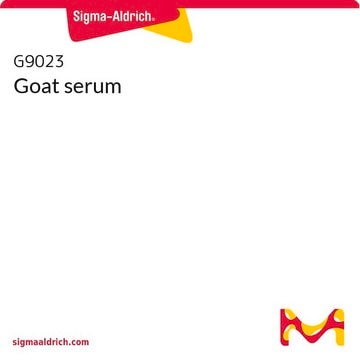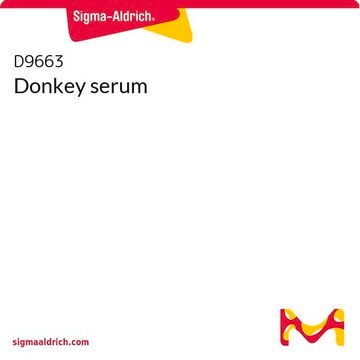Using P5282 with cells fixed in paraformaldehyde instead of methanol-free formaldehyde was attempted, but the results were not satisfactory with regular formaldehyde. A specific protocol for the reconstitution of Phalloidin P5282-.1MG in the case of tissues fixed in paraformaldehyde and included in O.C.T medium is not available. However, it is suggested to find relevant information in the literature, such as in this article, https://www.oncotarget.com/article/25259/ DOI:[10.18632/oncotarget.25259].
Kluczowe dokumenty
P5282
Phalloidin Peptide
≥90% (HPLC), solid, FITC labeled
Synonim(y):
Phalloidin-FITC
Wybierz wielkość
2770,00 zł
Wybierz wielkość
About This Item
2770,00 zł
Polecane produkty
Nazwa produktu
Phalloidin, Fluorescein Isothiocyanate Labeled, sequence Amanita phalloides(synthetic: peptide sequence)
pochodzenie biologiczne
sequence from Amanita phalloides (synthetic: peptide sequence)
Poziom jakości
Formularz
solid
fluorescencja
λex 495 nm; λem 520 nm(lit.)
temp. przechowywania
−20°C
Powiązane kategorie
Opis ogólny
Zastosowanie
Działania biochem./fizjol.
Hasło ostrzegawcze
Danger
Zwroty wskazujące rodzaj zagrożenia
Zwroty wskazujące środki ostrożności
Klasyfikacja zagrożeń
Acute Tox. 2 Dermal - Acute Tox. 2 Inhalation - Acute Tox. 2 Oral
Kod klasy składowania
6.1A - Combustible acute toxic Cat. 1 and 2 / very toxic hazardous materials
Klasa zagrożenia wodnego (WGK)
WGK 3
Temperatura zapłonu (°F)
Not applicable
Temperatura zapłonu (°C)
Not applicable
Wybierz jedną z najnowszych wersji:
Certyfikaty analizy (CoA)
Nie widzisz odpowiedniej wersji?
Jeśli potrzebujesz konkretnej wersji, możesz wyszukać konkretny certyfikat według numeru partii lub serii.
Masz już ten produkt?
Dokumenty związane z niedawno zakupionymi produktami zostały zamieszczone w Bibliotece dokumentów.
Klienci oglądali również te produkty
Produkty
In the midst of beeping lab timers, presentations and grant deadlines, it is easy to take for granted the quality of lab reagents.
Powiązane treści
Three-dimensional (3D) printing of biological tissue is rapidly becoming an integral part of tissue engineering.
Trójwymiarowe (3D) drukowanie tkanek biologicznych szybko staje się integralną częścią inżynierii tkankowej.
-
Is it possible to use P5282 with cells fixed in paraformaldehyde instead of methanol-free formaldehyde?
Is it possible to use P5282 with cells fixed in paraformaldehyde instead of methanol-free formaldehyde?
1 answer-
Helpful?
-
-
How do I stain cells with Product P5282, Phalloidin, Fluorescein Isothiocyanate Labeled?
1 answer-
A typical application for staining cells can be found in the product information sheet (under Documents, above).
Helpful?
-
-
What is the Department of Transportation shipping information for this product?
1 answer-
Transportation information can be found in Section 14 of the product's (M)SDS.To access the shipping information for this material, use the link on the product detail page for the product.
Helpful?
-
-
How do I dissolve Product P5282, Phalloidin, Fluorescein Isothiocyanate Labeled?
1 answer-
This product is soluble in methanol, ethanol, butanol and pyridine. It is soluble in cold water at a concentration of 5 mg/mL; it is much more soluble in hot water. See: The chemicals encyclopedia published by the Royal Society of Chemistry, 12th ed., entry# 7336 (1996). Solutions should be prepared fresh, and protected from light whenever possible.
Helpful?
-
-
How do I prepare stock solutions of Product P5282, Phalloidin, Fluorescein Isothiocyanate Labeled?
1 answer-
Stock solutions of phalloidin conjugates have been made in methanol or DMSO at 0.1 to 5 mg/mL. Make final dilutions in aqueous physiological buffers for a staining range from 0.1 μM to 100 μM with corresponding incubation times of 15 minutes to 72 hours.
Helpful?
-
-
What are the excitation and emission wavelengths used for fluorescent detection of Product P5282, Phalloidin, Fluorescein Isothiocyanate Labeled?
1 answer-
Excitation wavelengths of 540-545 nm and emission wavelengths of 570-573 nm can be used. See: Faulstich, H., J. Muscle Res. Cell Motility, 9, 370 (1988), and Waggoner, A. et al., Methods in Cell Biology, 30, 449 (1989).
Helpful?
-
-
How do I store Product P5282, Phalloidin, Fluorescein Isothiocyanate Labeled?
1 answer-
The product should be stored at a powder in the freezer at -20°C.
Helpful?
-
Active Filters
Nasz zespół naukowców ma doświadczenie we wszystkich obszarach badań, w tym w naukach przyrodniczych, materiałoznawstwie, syntezie chemicznej, chromatografii, analityce i wielu innych dziedzinach.
Skontaktuj się z zespołem ds. pomocy technicznej









